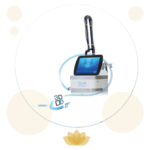Graduated cylinders are used primarily in laboratories to measure the volume of liquids. They are narrow and cylindrical with markings that indicate volume measurements.
They can be made of glass or plastic and are usually resistant to chemicals and heat. They are available in various sizes, including 10 ml, 25 ml, 50 ml, 100 ml, and 250 ml.

Accuracy
Accuracy is essential in any laboratory, especially with volumetric instruments like beakers, Erlenmeyer flasks, and dropping funnels. The accuracy of these instruments varies, depending on the dimensions and graduating divisions. For example, a 100 mL beaker may only have markings for 20 mL. This makes it difficult to determine how much volume a liquid sample has. In contrast, graduated cylinders have markings every 1 mL, making it easier to measure the exact volume of your liquid sample. The best way to do this is to observe the surface of the liquid inside a graduated cylinder at eye level; the line at the bottom of the meniscus indicates the liquid’s volume. Graduated cylinders come in various materials, including glass and plastic. Glass measuring cylinders are made of borosilicate, which is known for its low thermal expansion and for maintaining transparency and strength even under high temperatures.Precision
A graduated cylinder is a laboratory tool used to measure the volume of liquids. It is a versatile, precise, and reliable tool used extensively in various scientific fields. In a laboratory, beakers and glass cylinders are some of the most common equipment pieces researchers use to mix and titrate liquids. However, they do not always serve the same purposes and are not interchangeable in applications that require precision and accuracy. When measuring liquids, the graduated cylinder is more accurate than a beaker. This is because cups are prone to wide variations in heights and have scales that do not provide the exact measurements of liquids.Safety
A Graduated Cylinder is a valuable tool for measuring liquids in the laboratory. It is easy to use and provides precise volume measurement. To ensure accuracy when reading a graduated cylinder, place it on a flat surface. You should also take care of the meniscus, a curved liquid surface that can make it difficult to read a value. In addition, some glass graduated cylinders have a plastic safety ring that helps keep them from breaking if tipped over. This ring is located at the bottom of the cylinder and is easily adjusted to prevent contact with the top of a receiver when liquid is poured from the cylinder. Polypropylene is resistant to most student lab chemicals except powerful oxidizing agents. The sizeable secure handle makes pouring safe and steady, while the hexagonal base prevents tipping or rolling.Durability
In chemistry laboratories, many liquids are used in experiments, and it is essential to measure these quantities accurately. For this, beakers and graduated cylinders are commonly used. Cylinders are made from various materials, such as glass and plastic, to suit the specific needs of a laboratory. Some have a coating to avoid breakage and prevent the formation of a meniscus. To use a graduated cylinder to measure liquids, place the cylinder on a flat surface. The fluid in the cylinder will tend to curve downward and form a meniscus (see figure 2.). To read the measurement, hold the cylinder so that the bottom of the meniscus is at eye level. Then, match the fluid level with the graded marking closest to the meniscus. This will give you the correct reading.







